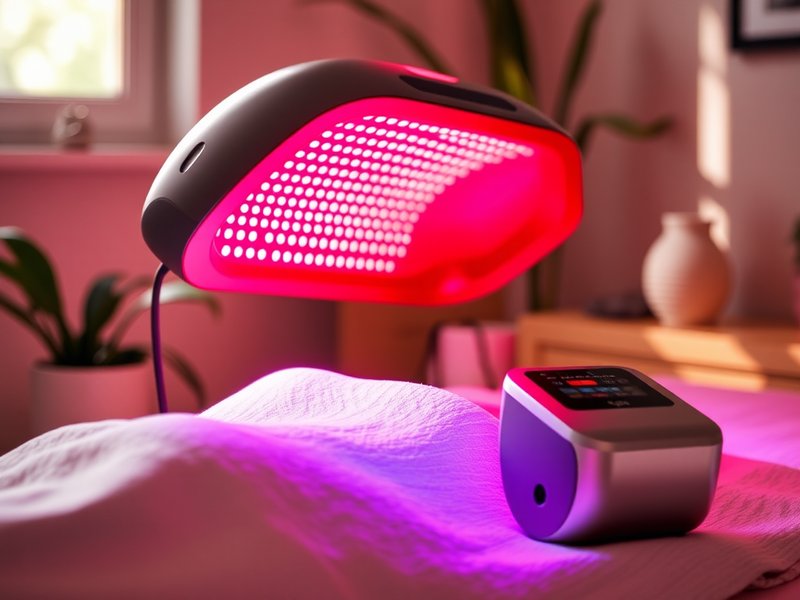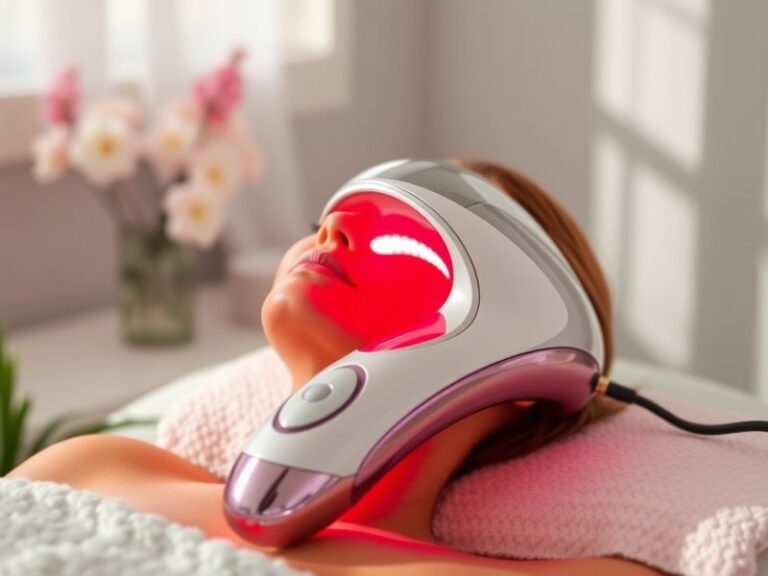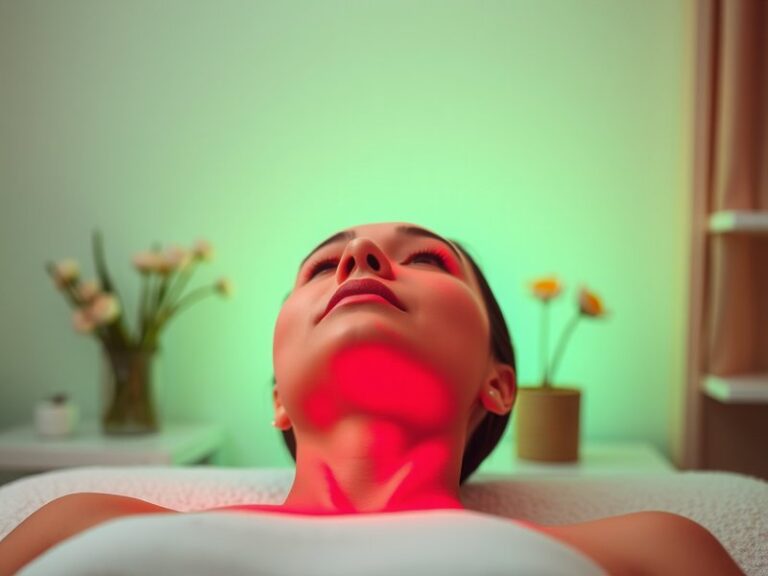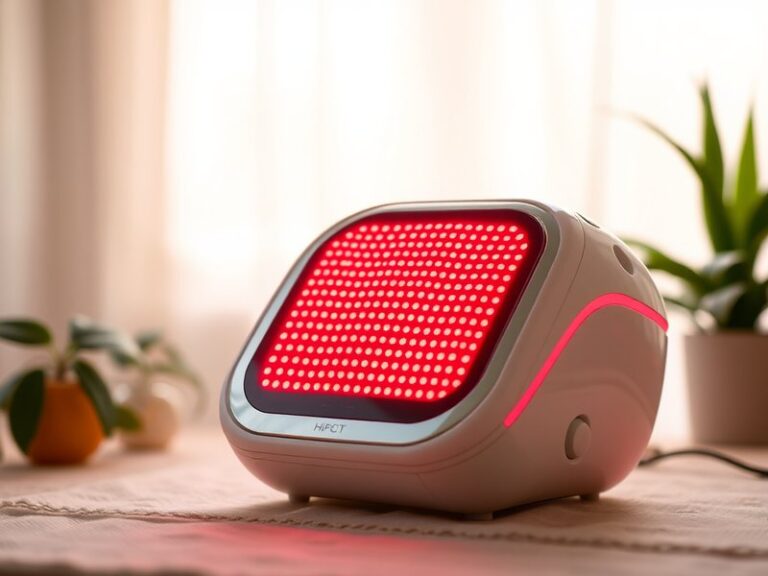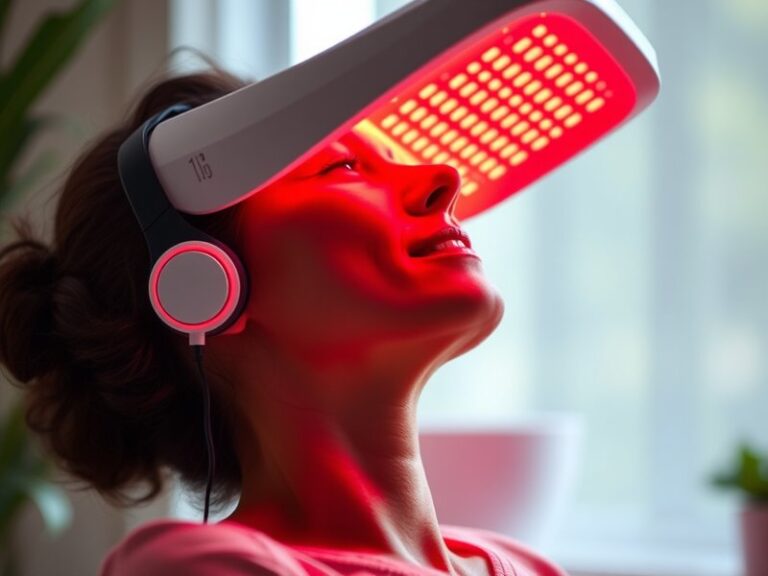What To Look For When Buying Red Light Therapy?
What To Look For When Buying Red Light Therapy
What are the key features that make red light therapy devices effective and safe for home use?
When considering red light therapy devices, it’s essential to navigate the multitude of options and ensure that the product you choose meets your specific needs. This article will guide you on the critical factors to consider, the benefits of red light therapy, and alternative treatment methods. By the end, you will have a clearer idea of how to make an informed purchasing decision.
Key Takeaways
- Look for devices that offer the correct wavelength, typically between 600 to 850 nanometers, to ensure effectiveness.
- Pay attention to the power output of the device; higher power output means faster and more effective treatments.
- Consider the size and portability of the device to ensure it fits your lifestyle and treatment needs.
What is Red Light Therapy?
Red light therapy (RLT) is a non-invasive treatment that uses low-wavelength red light to penetrate the skin and promote healing. This therapy is believed to enhance the body’s natural processes, boosting cellular energy production and reducing inflammation.
How Does It Work?
RLT works by using specific wavelengths of light, mainly red (600-650 nm) and near-infrared (800-850 nm), which stimulates the mitochondria in cells. This stimulation helps in the production of adenosine triphosphate (ATP), the energy currency of our cells, leading to improved cellular function.
Applications of RLT
RLT can be used for various conditions such as skin rejuvenation, wound healing, pain relief, and hair growth. Each application may require different specifications and treatment durations.
What are the Benefits of Red Light Therapy?
Exploring the benefits of red light therapy can help you understand why it has gained popularity in the wellness community.
Enhanced Skin Health
RLT promotes collagen production, leading to improved skin elasticity, reduced wrinkles, and overall skin rejuvenation. Many users report a more youthful complexion after consistent use.
Reduced Inflammation and Pain Relief
Studies have indicated that RLT can decrease inflammation and alleviate pain associated with conditions such as arthritis or muscle soreness, making it an appealing option for those with chronic pain.
Accelerated Healing
RLT has shown promise in speeding up recovery from injuries by promoting cellular repair and regeneration. This can be especially beneficial for athletes and those undergoing rehabilitation.
Improved Mood and Sleep Quality
Emerging research suggests that exposure to red light can enhance mood and contribute to better sleep by regulating circadian rhythms, allowing users to benefit holistically from treatment.
Read our discussion on Face prep for red light therapy.
Is it Possible to Use Red Light Therapy at Home?
Yes, using red light therapy at home is entirely feasible with the right devices. Several user-friendly options are available, from handheld devices to larger panels that can treat broader areas.
What are the Advantages of Home Use?
- Convenience: The ability to use therapy on your schedule without needing to visit a clinic.
- Cost-Effective: Eliminating ongoing treatment costs can lead to significant savings over time.
- Privacy: Performing treatments in the comfort of your home allows for a relaxed environment.
What are the Disadvantages of Home Use?
- Risk of Misuse: Without professional guidance, users might not achieve optimal results or may overuse devices.
- Equipment Limitations: Home devices may be less powerful or specifically designed than professional machines.
- Lack of Immediate Support: In a clinical setting, you have access to professional advice and adjustments if needed.
What are the Things to Consider Before Buying a Red Light Therapy Device?
Before purchasing a red light therapy device, consider these important factors to ensure you make the best choice for your needs.
Wavelength Range
Always verify the wavelength range of the device. For effective treatment, look for products that provide a wavelength between 600 nm and 850 nm, as these have been proven to offer the best therapeutic benefits.
Power Output
Evaluate the power output specified in milliwatts (mW). Higher power outputs deliver more light energy to the cells, which can lead to faster and more effective treatments.
Treatment Area Size
Consider the size of the device and how much area it can cover efficiently. Larger devices can treat more areas at once, while smaller devices might be better for targeted treatment.
Safety Features
Look for built-in safety features such as automatic shut-off timers and cooling systems, which can enhance user safety and comfort during treatment.
What are the Alternatives to Red Light Therapy?
If you’re exploring other treatment options, several alternatives may also help achieve similar benefits.
Infrared Saunas
Infrared saunas use heat and infrared light to promote detoxification and relaxation. They can be great for skin health and muscle recovery, though they offer less targeted treatment than RLT.
Cold Laser Therapy
Cold laser therapy employs low-level lasers to stimulate healing and reduce pain. It targets the same biological mechanisms as RLT, making it a viable alternative for similar benefits.
Topical Treatments
Creams and serums infused with antioxidants, peptides, or retinoids can also improve skin health and may complement the effects of red light therapy.
Massage Therapy
Regular massage can assist in reducing inflammation and pain, promoting relaxation, and improving overall well-being. It’s a holistic approach that can work well alongside RLT.
Conclusion: Is it Recommended to Use Red Light Therapy?
Red light therapy offers significant potential benefits for various health and wellness needs. By considering factors like wavelength, power, and safety features, consumers can make informed choices when purchasing equipment. As long as proper use guidelines are followed, and expectations are realistic, red light therapy is recommended for enhancing skin health, alleviating pain, and accelerating healing.
Frequently Asked Questions
What is the ideal duration for a red light therapy session?
Typically, sessions range from 10 to 30 minutes, depending on the device’s power output and the area being treated. Always refer to the manufacturer’s recommendations.
How often should I use red light therapy?
Most users benefit from 3 to 5 sessions per week, but individual needs may vary. Assess personal goals and conditions to determine the best frequency.
Can red light therapy be used on all skin types?
Yes, red light therapy is generally considered safe for all skin types. However, it’s always advisable to consult with a healthcare provider if you have concerns related to specific skin conditions.
Are there any side effects of using red light therapy?
Most users experience no side effects, but some may experience temporary redness or warmth in the treated area. Always start with shorter sessions to gauge your body’s response.
Is professional RLT more effective than at-home devices?
Professional devices are often more powerful and designed for specific treatments. However, well-designed home devices can still provide effective results when used correctly.
Check out the latest Does Red Light Therapy eliminate turkey neck?
